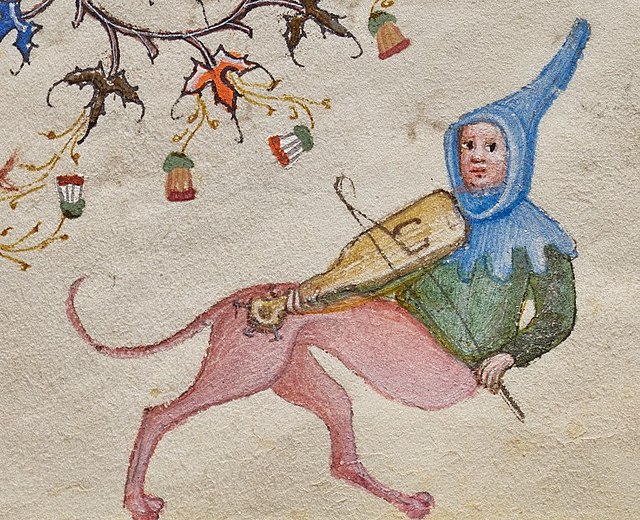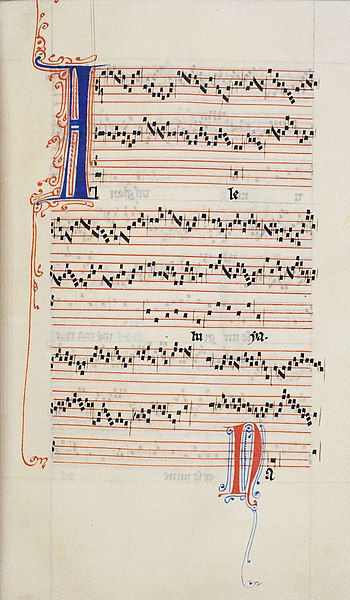Early music generally comprises Medieval music (500–1400) and Renaissance music (1400–1600), but can also include Baroque music (1600–1750). Originating in Europe, early music is a broad musical era for the beginning of Western classical music.
Renaissance-era lute and viol, depicted in a detail from a painting by Francesco Francia
The Akademie für Alte Musik Berlin, modern performers of Early music
Medieval music encompasses the sacred and secular music of Western Europe during the Middle Ages, from approximately the 6th to 15th centuries. It is the first and longest major era of Western classical music and is followed by the Renaissance music; the two eras comprise what musicologists generally term as early music, preceding the common practice period. Following the traditional division of the Middle Ages, medieval music can be divided into Early (500–1000), High (1000–1300), and Late (1300–1400) medieval music.
A creature plays the vielle in the margins of the Hours of Charles the Noble, a book which contains 180 depictions of medieval instruments, probably more than any other book of hours.
David playing the harp, accompanied by plucked fiddle and clappers/cymbals. Circa 795, Germany or France.
Pérotin, "Alleluia nativitas", in the third rhythmic mode.
Pérotin's Viderunt omnes, c. 13th century.






